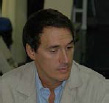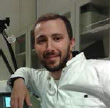|
|
|
| |
| ABSTRACT |
|
Change Of Direction Speed (CODS) and Reactive Agility (RA) are two determining factors in the ability of young soccer players. We aimed to verify if CODS and RA could be useful in order to establish the best young soccer player field position. Ninety-two elite soccer players (15.18 ± 1.21 years, weight 59.18 ± 9.93, height 1.72 ± 0.08, BMI 19.76 ± 2.22), belonging to two youth categories from the Italian First and Second Divisions, volunteered in this study. The participants included 32 defenders (15.06 ± 0.80 years), 37 midfielders (15.11 ± 0.84 years) and 23 forwards (15.48 ± 1.16 years), and they underwent two tests, each one performed in two different ways: the Y-Agility Test, carried out in a planned and reactive mode (Y-PLAN and Y-REAC), and the Illinois for Change of Direction Test (ICODT) performed with and without the ball. REAC-INDEX, which represents the index of reactivity, was calculated as Y-REAC minus Y-PLAN. The difference between the two scores of ICODT (ICODT with the ball minus ICODT without the ball) represents the TECHN-INDEX. Multivariate Analysis of Variances (MANOVA) was used to evaluate significant differences among all position groups, for all the test scores. MANOVA showed no significant differences in test scores or in TECHN-INDEX among the groups, except for the forwards, who were significantly more reactive than the defenders (p < 0.05). The strong and significant Pearson’s Correlation between ICODT with and without the ball (p < 0.01) demonstrated that physical and technical preparations have the same relevance in all positions. No significant differences were found among players in different field positions for CODS and RA performances, both with and without the ball. This study does not recommend to use RA and CODS as indicators to assign the players roles in youth soccer. |
| Key words:
Game roles, training, open skills, reactivity
|
Key
Points
- Agility is a key skill required for soccer success, and it is based on greater levels of motor control, when compared to pre-planned CODS.
- No significant differences amongst players in different field positions for CODS and Agility performances were found.
- This study does not recommend to use Agility and CODS as indicators to assign the players roles in youth soccer.
|
Both tactics and player position on the soccer field are essential for the organization of a soccer match (Ruas et al., 2015) and for improving the successful outcomes of the matches. Specifically, the field role determines the plan of action and game strategies. Genetic predispositions influence the potential role selection: anthropometric characteristics indicate that, for example, taller players are the most suitable for central positions and for certain “target” positions among the forwards, where body size provides an advantage (Perroni et al. 2015; Rebelo et al., 2013; Reilly et al., 2000). Nevertheless, no positional differences in young soccer players have been reported in previous studies, in terms of their anthropometric characteristics, physical capacity or mental confidence (Fiorilli et al., 2013; Coelho et al., 2010). Physiological demands also vary with regard to the rates of physical exertion required for each position (Macarthur and North, 2005; Payne and Montgomery, 2004), although players may develop certain skills as reactive strength, endurance and balance (di Cagno et al., 2013; 2014), based on the demands of their specific position (Weber et al., 2010). The selection of young players for a specific field position based on their anthropometric, physical and physiological profile may not be appropriate because the differences in the length of time taken for boys to mature favours average and early maturing boys (Deprez et al., 2015; di Cagno et al., 2014). Consequently, cognitive skills and tactics may be a more suitable and stable indicator for appointing young players to different roles. Moreover, we must take into account that cognitive skills are an integral part of the abilities required in soccer in reaction to the opponents’ actions (i.e., stimuli) (Battaglia et al., 2013). Players differ in their ability to ‘read and react’ to stimuli, which is the definition of Reactive Agility (RA). Agility is an essential component in most field and team sports and it is fulfilled by changes of direction every 2–4 seconds, with 1200–1400 changes of direction throughout a game (Sporis et al., 2009). Traditionally, agility was simply defined as speed with directional changes (Draper and Lancaster, 1985). Currently, agility is considered an open skill and was recently defined as a change in velocity or direction in response to a stimulus that cannot be pre-planned (Sheppard et al., 2006). The stimulus may be the movement of the ball or the movement in response to the actions of an opposing player (Moreno, 1995). RA is “a multi-planar or multidirectional skill” that combines acceleration, explosiveness, and reactiveness. This definition suggests that RA consists of both cognitive and physical abilities. An examination of the physical factors that influence agility demonstrates that running technique can play a key role in Change of Direction Speed (CODS). Several studies, that examined the performance of unfamiliar techniques in a time-stressed situation, have highlighted the fundamental role of RA training (Bradshaw et al., 2011; Serpell et al., 2011). Young et al., (2002) suggested that foot placement, trunk lean, stride adjustment, and running posture are important technical components of CODS and RA and also facilitate perception of an offensive player’s deception in one-on-one situations (Jackson et al., 2006). It is well known that in soccer, athletes who have anticipatory expertise are able to recognize and attend to different stimuli faster after the presentation of a stimulus (Williams and Davids, 1998), compared to novice players, who may require the entire skill to be executed by the opponent (e.g., cross-over, step and direction change) before making the correct decision and responding to the stimulus. In invasion sports, such as soccer, RA skill is beneficial for forwards, as it allows them to evade their opponents’ pressure or tackles and to gain and maintain possession of the ball. It is also beneficial for defenders to reduce space on the field or court to limit attacking movements and to prevent the opposition from scoring (Spittle, 2013). The purpose of this study was to determine the relationship between CODS and RA in young soccer players according to their field position in order to improve training methods and optimize interventions on the basis of player’s roles. Experimental approach to the problemThis is a cross-sectional study in which the authors assessed CODS, RA performance and ball control techniques in three groups of high-level young athletes who play in different soccer field positions. The assessment involved two tests, each one performed in two different ways: a reactive and a pre-planned Y-test and the Illinois Change of Direction Speed Test (ICODT) with and without the ball. The two Y-tests were similar. The CODS test, assessed with a pre-planned Y-test (Y-PLAN test), was designed to replicate the movement of the agility test (Y-REAC test), but participants were instructed to move in a certain direction in advance. In the agility tasks, the athletes chose the appropriate direction in response to a stimulus. The ICODT with and without the ball assesses the speed in change of direction, taking into account ball control skill and management. The differences in the CODS and RA performances and ball control techniques between the three groups were investigated.
SubjectsNinety-two elite soccer players (average age was 15.18 ± 0.98 years) belonging to two youth leagues, the Italian First and Second Divisions, volunteered for this study. They were classified into three soccer roles: defenders, midfielders, and forwards. Detailed characteristics of the participants are shown in Table 1. Their training regimen consisted of three training sessions and one game per week. To be involved in the study, they had to meet the following inclusion criteria: participation in at least 80% of the training sessions of their respective clubs, a minimum of 7.5 years of experience in competitive soccer, no injuries that had occurred in the previous year, and no presence of relevant diseases. The following exclusion criteria were applied: presence of injuries, pathologies, or other conditions (temporary or not) that could influence the correct execution of the tests proposed in this study. The players and their parents were informed about the purpose of the study, and all of them gave their written informed consent to the procedures described in the study. The study was designed and conducted in accordance with the Declaration of Helsinki and approved by the bioethical committee of the University of Molise.
ProceduresAt baseline, the participant’s weight, height, and Body Mass Index (BMI) were measured. The three groups of soccer players performed two tests with and without the ball to assess CODS and RA: the Y-pre-planned agility test, the Y-reactive agility test, for assessing agility and the ICODT with and without the ball for assessing ability to change direction (Figure 1). Goalkeeper performances were not analysed because there is a clear difference between goalkeepers and field players in almost all physiological and technical parameters. The tests were performed at the same time (4 pm) on different days to avoid test variance and to prevent fatigue. Before being tested, each participant completed a 15-minute warm-up, including jogging, lateral displacements, dynamic stretching, and jumping. Participants were allowed four minutes of rest between warm-up and the study tests. All athletes were familiarized with the testing procedures and performed the number of trials required by each test successively with a recovery period of three minutes between trials (Henry et al., 2011). The best performance was recorded for each player. The tests were performed outdoors on an artificial turf where the participants usually trained. All tests were executed by players wearing their usual clothes and soccer boots. The participants were instructed to refrain from strenuous activity for 24 hours before each session.
Y-pre-planned Agility TestThe Y-pre-planned agility test (Dellal et al., 2010) is used to evaluate CODS. Participants were asked to sprint as fast as possible for 5 m through a triggered timing gate (start gate), make a 45° cut and sprint 5 m to the left or right through a target gate. In this test, participants knew the cut direction. The time to complete the 10 m of the test is recorded by software that measures the time spent between the photocells (HL3-1x Wireless Fotocellule - TAG Heuer Professional Timing) at the start and finish gates. The best time of eight attempts was considered the Planned Trial score (Y-PLAN).
Y-reactive Agility TestParticipants performed the same sprint described in the previous test, but they did not know the cut direction in advance and had to visually find the illuminated gate that indicated the change of direction. Illumination of the target gate was activated by photocells positioned 2.5 m away from the start gate. The time to complete the 10 m of the test was recorded by software and photocells, and the best time of eight attempts was considered the Reactive Trial score (Y-REAC). The difference between the two scores (Y-REAC minus Y-PLAN) represented the time required for reactive processes to occur and was the third score of the Y-test, named REAC-INDEX.
The Illinois Change of Direction TestThe ICODT with and without the ball (Hachana et al., 2014) is set up with four markers forming a square area of 9.3 x 7.2 metres. The start and finish gates are positioned at two consecutive angles of a square area, and two markers are positioned on the opposite side to indicate the two turning points. Four other markers are in the centre, an equal distance apart (3.1 m.). Each participant had to run as quickly as possible from the start gate, follow a planned route and slalom through the markers without knocking them down or cutting over them. From a standing position, each athlete sprinted 9.3 m on command and returned back to the starting line, then had to swerve in and out of the markers, perform another sprint of 9.3 m, and complete the test by running to the finish gate. When the participant went through the finish gate and the software had recorded the time between the photocells at the start and finish gates, the test was completed. If a subject failed to do this, the trial was stopped and re-attempted after the required recovery period. The best time of three attempts was considered the ICODT score. The test reliability is 0.96 (ICC) (Hachana et al., 2014). The test was repeated in the same manner with the ball, keeping possession of the ball near the foot throughout the testing phase. A previous study has shown that this test had an approximately 3% coefficient of variation. The difference between the two scores, ICODT with the ball minus ICODT without the ball, represented the time required for ball control techniques and was the third score obtained from the ICODT, named TECHN-INDEX (Hachana et al., 2014). A graphic representation of the test is shown in Figure 1.
Statistical analysesThe assumption of normality was checked using the Shapiro-Wilk test, and all variables showed a normal distribution. Multivariate Analysis of Variances (MANOVA) was used to evaluate significant differences between all position groups (Defenders, Midfielders, and Forwards) for all the test scores. MANOVA was performed using the test scores as dependent variables (Y-PLAN, Y-REAC, REAC-INDEX, ICODT without the ball, ICODT with the ball and TECHN-INDEX) and the three positions as independent variables (Defenders, Midfielders, and Forwards). A Sidak post hoc test was used to assess mean differences where a significant F value was observed. Pearson’s correlation analysis was conducted for the Y-PLAN, Y-REAC and REAC-INDEX scores and for the ICODT without the ball, ICODT with the ball and TECHN-INDEX scores to evaluate if correlations existed between the CODS test scores and the RA test scores. The correlation analyses were performed separately for the different positions (Defenders, Midfielders, and Forwards). The P-value for statistical significance was set at 0.05. The effect size of the analysis was also calculated as partial eta squared (η2p). For all the statistical analyses, the SPSS statistical package software was used (IBM, v.20.0, Chicago, IL, USA).
The data were reported as the mean ± standard deviation (SD). MANOVA showed a significant difference between the 3 groups (F10,170 = 2.292; p = 0.015; η2p = 0.119). Univariate analysis showed significant differences only in the Y-REAC test scores (F2,89 = 3.842; p = 0.033; η2p = 0.079), and Sidak post hoc analysis found that the forwards had a significantly lower test time compared with the defenders (p < 0.05). No other significant differences were found in other tests between the groups. The detailed results are reported in Table 2. Pearson’s correlation analyses were performed between CODS and agility performances and CODS with and without the ball. The results are reported in Table 3. The main finding of this study was that no significant differences were found among the players in different field positions, for CODS and RA performances, both with and without the ball. There are two possible explanations for these results. The first one is that the modern trend of soccer training, with frequent changes in tactical directives, based on the characteristics of the opponent, has led to an increased adaptability of player roles especially in young players. In fact, it is possible, also in youth training, to change a player position in response to different game situations, developing a large range of technical solutions and more functional characteristics in the young soccer player, useful for his future playing soccer carrer (Deprez et al., 2015). The second explanation is that the specialization between the task-playing positions is more evident in older age groups, that require attention, more mature tactical tasks, than in the young players enrolled in this study (Iuliano,et al., 2015; Aziz et al., 2008). In youth soccer, coaches generally assign players to different field positions and train them to play in multiple positions (Pedretti, 2016). Nevertheless, as shown by the results of this study, the forwards demonstrated better results in RA assessed by Y-REAC test, than the defenders. RA, is an open skill that cannot be pre-planned and allows athletes in each role to accelerate, decelerate and change direction in response to specific stimuli (Farrow et al., 2005). The forwards showed better cognitive ability to ‘read and react’ to the stimulus given. In other words, they were able to complete the decision-making process faster than the defenders (Sheppard et al., 2006). Moreover, forwards, who generally have a higher level of speed and explosive power than the other roles, combine perception with action to complete sprints over short distances (Young et al., 2015). Evasive actions towards the opposing defender create goal opportunities. In contrast, defensive agility is the ability to react in order to block attacking movements and increase pressure, with the objective of causing turnovers. The cognitive component of agility, in this study, is different in offensive and defensive roles because the offensive forwards’ actions influence and determine the defensive actions. No significant differences were found between the groups in the ICODT scores, both with and without the ball, nor for the TECHN-INDEX. These results could be expected because the modern organization of soccer positions has required defenders to develop high technique abilities to control the ball and carry out offensive actions. Similarly, in addition to offensive skills, forwards also need to develop defensive skills (Young et al., 2015). The Y-PLAN and Y-REAC scores were highly and significantly correlated in young soccer players in all the field positions examined, despite the fact that the change of direction in the Y-REAC test required a reactive adaptation (response to an unpredictable stimulus). This result is in contrast with previous studies (Young et al., 2015), that showed no correlation between Agility and CODS in adult athletes. Our result may be likely due to the similarity and simplicity of the two tests, It is well known that a reduction in the complexity of the received stimulus decreases the decision-making time under uncertainty (Serpell et al., 2011). The simplicity of the test provides objective and clear results that could be useful for identifying the best field position for each player in relation to their physical and cognitive characteristics (Battaglia et al. 2013). The strong, significant correlation between ICODT with and without the ball demonstrates that physical and technical abilities have the same relevance in all the young player’s roles (Piazza et al. 2014). The use of the ball during change of direction tests tends to make the test more specific, and create an environment in which the test is performed, less reliable and less predictable as in the real soccer game (Bradshaw et al., 2011). In this study, the correlation between TECHN-INDEX and ICODT with the ball was strong, whereas the correlation between TECHN-INDEX and ICODT without the ball was medium for all the groups. Although correlations do not indicate causality, this second finding suggests that a high level of ball control could influence the speed of a player’s change of direction in all field positions (Carvalho and Cabri, 2007); for example, the defending position requires long kicks and ball passes. Midfielders showed the highest correlations for both ICODT tests because they have to perform both defensive and offensive tasks that require frequent movements up and down the field for the entire duration of the game (Deprez et al., 2015). The findings of this study are subject to several limitations. The players were divided into three types of position roles only, even though more positions are required in relation to the different game strategies adopted (wide midfielder, central midfielder, wide defender, central defender and so on), and this choice could have influenced the results (Ruas et al., 2015). The tests chosen in this study may not accurately represent competitive situations because of the lack of an opponent during the change of direction test. Nevertheless, the performance results of the tests provided objective and comparable scores that allow relevant information to be obtained for selecting and training young. The simplicity and brevity of the chosen tests may allow for periodic and frequent repetition with easy comparison of the results, which may improve the training of the players. Practical applicationsRA is a key skill required for soccer success, and it is based on greater levels of motor control, when compared to pre-planned CODS. This consideration differentiates the two types of skill training. However this study showed that no significant differences in CODS and RA performances were found between field positions. The forwards showed similar test scores to the defenders, who are closely connected to forwards’ decision-making. Midfielders have to perform both defensive and offensive tasks. Additionally, in youth soccer, midfielders should be creative and skilled players, acting as the link between forwards and defenders and thus allowing them to find the best solutions in the midfield (Deprez et al., 2015). RA and CODS could not be used as predictors to identify potential field position in youth soccer.
RA and CODS are key skills required for soccer success, based on greater levels of motor control, however this study does not recommend to use RA and CODS as indicators to assign the players roles in youth soccer. Further studies are needed to confirm these results.
| ACKNOWLEDGEMENTS |
The research was conducted in University of Rome “Foro Italico”. No funding was received for this work. |
|
| AUTHOR BIOGRAPHY |
|
 |
Giovanni Fiorilli |
| Employment: Technical Coordinator of Physical Education, Department of Medicine and Health Sciences, University of Molise, Campobasso, Italy |
| Degree: PhD |
| Research interests: Sport Sciences and Coaching |
| E-mail: fiorilli@unimol.it |
| |
 |
Enzo Iuliano |
| Employment: University Tutor with part-time contract, Department of Medicine and Health Sciences, University of Molise, Campobasso, Italy |
| Degree: PhD |
| Research interests: Sport Sciences and Coaching |
| E-mail: enzo.iuliano@unimol.it |
| |
 |
Michalis Mitrotasios |
| Employment: Assistant Professor, Department of Sport Science, National and Kapodistrian University of Athens, Greece |
| Degree: PhD |
| Research interests: Sport Sciences and Coaching |
| E-mail: micmit13@yahoo.gr |
| |
 |
Eugenio M. Pistone |
| Employment: University Tutor and Educational Tutor for the National Youth sector of soccer, Department of Motor Human and Health Sciences, Italian University of Rome “Foro Italico”, Italy |
| Degree: PhD student |
| Research interests: Athletic Training and Rehabilatation |
| E-mail: eugeniomaria.pistone@uniroma4.it |
| |
 |
Giovanna Aquino |
| Employment: University Tutor with part-time contract, Department of Medicine and Health Sciences, University of Molise, Campobasso, Italy |
| Degree: PhD |
| Research interests: Sport Sciences and Coaching |
| E-mail: Giovanna.aquino@unimol.it |
| |
 |
Giuseppe Calcagno |
| Employment: Assoc. Prof., Department of Medicine and Health Sciences, University of Molise, Campobasso, Italy |
| Degree: PhD, MD |
| Research interests: Biochemistry, Genetic Testing and Sport Sciences |
| E-mail: giuseppe.calcagno@unimol.it |
| |
 |
Alessandra di Cagno |
| Employment: Ass. Prof., Department of Motor Human and Health Sciences, Italian University of Rome “Foro Italico”, Italy |
| Degree: PhD |
| Research interests: Sport Sciences and Coaching |
| E-mail: alessandra.dicagno@uniroma4.it |
| |
|
| |
| REFERENCES |
 Aziz A.R., Mukherjee S., Chia M.Y.H., The K.C. (2008) Validity of the running repeated sprint ability test among playing positions and level of competitiveness in trained soccer players. International Journal of Sports Medicine 29, 833-838. |
 Battaglia C., D’Artibale E., Fiorilli G., Piazza M., Tsopani D., Giombini A., Calcagno G., di Cagno A. (2014) Use of video observation and motor imagery on jumping performance in national rhythmic gymnastics athletes. Human Movement Science 38, 225-234. |
 Battaglia C., di Cagno A., Fiorilli G., Giombini A., Fagnani F., Borrione P., Marchetti M., Pigozzi F. (2013) Benefits of selected physical exercise programs in detention: a randomized controlled study. International Journal of Environmental Research and Public Health 10, 5683-5696. |
 Bradshaw R.J., Young W.B., Russell A., Burge P. (2011) Comparison of offensive agility techniques in Australian Rules. Journal of Science and Medicine in Sport 14, 65-69. |
 Carvalho P., Cabri J. (2007) Isokinetic assessment of muscle strength of the thigh in soccer players. Revista Portuguesa de Fisioterapia no Desporto 1, 4-13. |
 Coelho e Silva M.C., Figueiredo A.J., Cumming S.P., Malina R.M. (2010) Discrimination of U-14 soccer players by level and position. International Journal of Sports Medicine 31, 790-796. |
 Dellal A, Wong D.P., Moalla W., Chamari K. (2010) Physical and technical activity of soccer players in the Frenche first division with special reference to the playing position. International Journal of Sports Medicine 11, 278-290. |
 Deprez D., Fransen J., Boone J., Lenoir M., Philippaerts R., Vaeyens R. (2015) Characteristics of high-level youth soccer players: variation by playing position. Journal of Sports Sciences 33, 243-254. |
 di Cagno A. D., Fiorilli G., Iuliano E., Aquino G., Giombini A., Battaglia C., Piazza M., Tsopani D., Calcagno G. (2014) Time-of-Day Effects on Static and Dynamic Balance in Elite Junior Athletes and Untrained Adolescents. International Journal of Sports Science & Coaching 9, 615-625. |
 di Cagno A., Battaglia C., Fiorilli G., Piazza M., Giombini A., Fagnani F., Borrione P., Calcagno G., Pigozzi F. (2014) Motor Learning as Young Gymnast’s Talent Indicator. Journal of Sports Science and Medicine 13, 767-773. |
 di Cagno A., Battaglia C., Giombini A., Piazza M., Fiorilli G., Calcagno G., Pigozzi F., Borrione P. (2013) Time of day–effects on motor coordination and reactive strength in elite athletes and untrained adolescents. Journal of Sports Science and Medicine 12, 182-189. |
 Draper J.A., Lancaster M.G. (1985) The 505 test: A test for agility in the horizontal plane. Australian Journal of Science and Medicine in Sport 17, 15-18. |
 Farrow K., Borst A., Haag J. (2005) Sharing receptive fields with your neighbors: tuning the vertical system cells to wide field motion. The Journal of Neuroscience 25, 3985-3993. |
 Fiorilli G., Iuliano E., Aquino G., Battaglia C., Giombini A., Calcagno G., di Cagno A. (2013) Mental health and social participation skills of wheelchair basketball players: a controlled study. Research in Developmental Disabilities 34, 3679-3685. |
 Hachana Y., Chaabène H., Rajeb G.B., Khlifa R., Aouadi R., Chamari K., Gabett T.J. (2014) Validity and reliability of new agility test among elite and subelite under 14-soccer players. PloS One 9, e95773-. |
 Henry G., Dawson B., Lay B., Young W.B. (2011) Validity of a Reactive Agility Test for Australian Football. International Journal of Sports Physiology and Performance 6, 534-545. |
 Iuliano E., di Cagno A., Aquino G., Fiorilli G., Mignogna P., Calcagno G., Di Costanzo A. (2015) Effects of different types of physical activity on the cognitive functions and attention in older people: A randomized controlled study. Experimental Gerontology 70, 105-110. |
 Jackson R.C., Warren S., Abernethy B. (2006) Anticipation Skill and Susceptibility to Deceptive Movement. Acta Psychological 123, 355-371. |
 Macarthur D.G., North K.N. (2005) Genes and human elite athletic performance. Human Genetics 116, 331-339. |
 Moreno T. (1995) ONE-ON-ONE: Selecting Personal Trainers: How Do You Measure Up?. Strength Conditioning Journal 17, 29-30. |
 Oliver J.L., Meyers R.W. (2009) Reliability and generality of measures of acceleration, planned agility, and reactive agility. International Journal of Sports Physiology and Performance 4, 345-354. |
 Payne J., Montgomery H. (2004) Genetic variation and physical performance. World Review of Nutrition and Dietetics 93, 270-302. |
 Pedretti A., Pedretti A., de Oliveira Fernandes J.B., Rebelo A.N.C., Seabra A.F.T. (2016) The relative age effects in young soccer players and it relations with the competitive level, specific position, morphological characteristics, physical fitness and technical skills. Pensar a Prática, 19, 372-385. |
 Perroni F., Vetrano M., Camolese G., Guidetti L., Baldari C. (2015) Anthropometric and somatotype characteristics of young soccer players: Differences among categories, subcategories, and playing position. The Journal of Strength & Conditioning Research 29, 2097-2104. |
 Piazza M., Battaglia C., Fiorilli G., Innocenti G., Iuliano E., Aquino G., Calcagno G., Giombini A., Di Cagno A. (2014) Effects of resistance training on jumping performance in pre-adolescent rhythmic gymnasts: a randomized controlled study. Italian Journal of Anatomy and Embryology 119, 10-19. |
 Rebelo A., Brito J., Maja J., Coelho–Silva M.J., Figuerido A.J., Bangsbo J., Seabra A. (2013) Anthropometric Chacaracteristics, Physical Fitness, and Technical Performance of Under-19 Soccer Players by Competitive Level and Field Position. International Journal of Sports Medicine 34, 312-317. |
 Reilly T., Bangsbo J., Franks A. (2000) Anthropometric and physiological predispositions for elite soccer. Journal of Sports Sciences 18, 669-683. |
 Ruas C.V., Pint M.D., Brown L.E., Minozzo F., Mil-Homens P., Pinto R.S. (2015) The association between conventional and dynamic control knee strength ratios in elite soccer players. Isokinetics and Exercise Science 23, 1-12. |
 Schuth G., Carr G., Barnes C., Carling C., Bradley P. S. (2016) Positional interchanges influence the physical and technical match performance variables of elite soccer players. Journal of Sports Sciences 34, 501-508. |
 Serpell B.G., Young W.B., Ford M. (2011) Are Perceptual and Decision - Making Components of Agility Trainable? A Preliminary Investigation. Journal of Strength Conditioning Research 25, 1240-1248. |
 Sheppard J.M., Young W.B., Doyle T.L.A., Sheppard T.A., Newton R.U. (2006) An Evaluation of a New Test of Reactive Agility and its Relationship to Sprint Speed and Change of Direction Speed. Journal of Science and Medicine in Sport 9, 342-349. |
 Spittle M. (2013) . Motor Learning and Skill Acquisition. Melbourne, Australia. Palgrave Macmillan. |
 Sporis G., Jukic I., Ostojic S.M., Milanovic D. (2009) Fitness profiling in soccer: physical and physiologic characteristics of elite players. Journal of Strength Conditioning Research 23, 1947-1953. |
 Weber F.S., Silva B.G.C.D., Radaelli R., Paiva C., Pinto R.S. (2010) Isokinetic assessment in professional soccer players and performance comparison according to their different positions in the field. Revista Brasileira de Medicina do Esporte 16, 264-268. |
 Williams A.M., Davids K. (1998) Visual Search Strategy, Selective Attention, and Expertise in Soccer. Research Quarterly for Exercise and Sport 69, 111-128. |
 Young W.B., James R., Montgomery R. (2002) Is Muscle Power Related to Running Speed with Change of Direction?. Journal of Sports Medicine and Physical Fitness 42, 282-288. |
 Young W.B., Miller I.R., Talpey S.W. (2015) Physical Qualities Predict Change-Of-Direction Speed but Not Defensive Agility in Australian Rules Football. Journal of Strength Conditioning Research 29, 206-212. |
 Young WB, Dawson B., Henry GJ. (2015) Agility and change-of-direction speed are independent skills: implications for training for agility in invasion sports. International Journal of Sports Science and Coaching 10, 159-69. |
|
| |
|
|
|
|


